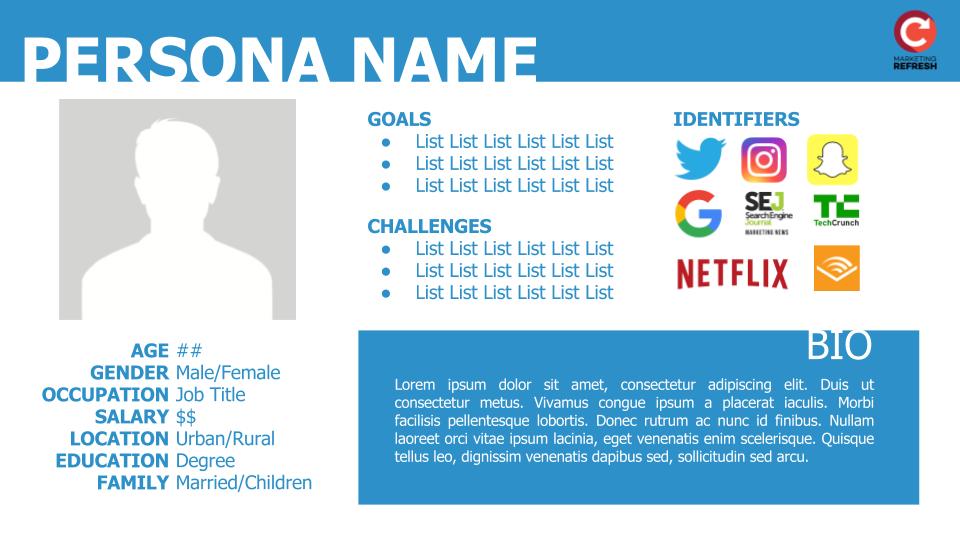In most companies, the marketing and sales teams run in complete silos.
Maybe they only meet in the break room during a birthday celebration — or worse — as a last resort when something is going wrong.
This is a huge missed opportunity for both teams!
When it comes down to it, there is no major difference between marketing and sales.
Marketing and sales teams share the same primary goal: to increase revenue.
In fact, the only way to truly close the loop on your marketing strategy and reporting is to include information from the entire customer lifecycle – from discovery, to consideration, to lead, to customer.
It’s in marketing’s best interest to help sales out, and vice versa.
If the teams were to work together, both would get better at their jobs.
A Marketing & Sales Super Team
The sales team is on the front lines with buyers.
They take leads across that final threshold from prospect to customer and acquire intimate details in the process.
Here are a few examples of how marketers can use some of that juicy sales information to improve their craft.
1. Validate Your Persona Details
Personas (or fictional representations of your target market segments) are pretty commonplace in marketing these days.
If you’ve gone through the persona process, I’m hoping your whole company (including the sales team) worked together to fill in the details and that they are based on factual information and not individual opinions.

(If not, Hubspot has a really great guide to the complete process of identifying and developing buyer personas).
Factual market data is great for identifying the meat of your personas.
It’s a lot harder to pull out the qualitative information from those insights – such as goals, pain points, or commonly-used phrases.
Your sales team is on the phone with potential customers all day, every day.
They are masters of identifying the primary issue, keeping a person on the phone, and they can probably spot a good lead from a bad lead about a mile away.
Use this knowledge to validate the data you’ve collected for your personas and fill in the gaps on some of that qualitative information.
This information is helpful for everything from blog posts, to subject lines, to relevant calls to action.
Knowing those details inside and out can be the difference between a decent piece of content that hits all of your SEO targets and a unicorn that converts at 50, 70, or 90 percent.
2. Identify the Best Content Ideas
Marketers, as a group, seem to have collectively improved at the content ideation process in recent years.
As SEO tools get better at helping us cull information and we master the process of keyword research; sometimes it feels that the problem is less about coming up with ideas and more about narrowing down the options to the ones that will provide the most ROI.
The moment of content strategy prioritization is precisely when a sales team can be your best friend.
Again, the sales team is in regular communication with your personas and the reps are probably looking for material to share with their leads that will help them close the deal.
By partnering with the sales team during your content selection process, you can eliminate the gaps in your buyer’s journey content map.
The sales team can help you prioritize and in turn, you can help them close more leads.
Everyone wins when revenue goes up!

3. Nail Down the Sales Cycle Length
Depending upon the business, a sales cycle could be anywhere from two minutes to two years or more.
Knowledge of the average sales cycle timeline is a basic ingredient for a sales team member but it’s important for marketing, too.
We’ve all experienced those companies whose marketing teams bombard us with never-ending emails with no regard to relevance or timeline.
More is not always better! Sometimes more is just more.
If you understand that your personas typically have a long sales cycle of up to a year, you can compliment your sales team with a well-timed drip campaign that supports their sales process.
4. Define Quality Leads
A major component of understanding the sales cycle length is an accurate description of each of the lead stages your personas will follow.
Products and services with longer sales cycles are more likely to have longer, more detailed lead stages with measurable factors each step of the way.
Many companies choose to create definitions for several stages of readiness, including:
- Opportunities.
- Subscribers.
- Marketing qualified leads.
- Warm leads.
- Cold leads.
Every company, however, should have a clear definition of what constitutes a sales qualified lead (SQL) for their sales team.
Whether you’re an agency passing the SQLs along to your client, or an internal marketing team funneling to your sales department, SQLs are the best measurement of the lead quality that marketing is producing (before revenue).
And since the definition of an SQL is a sales-ready lead who is likely to purchase, and your sales team is group closing the deals, you can’t set your parameters without talking to them.
Accurate definitions of SQLs will ensure you have the best data for your analysis.
Plus, if your sales team is part of the defining process, they will be bought into your definition of lead quality and effectiveness measurements for the marketing program.
5. Focus on the Metrics That Matter
There are a lot of potential measurements when it comes to digital marketing and content creation.
From traffic, to engagement, to bounce rate, to conversion and everything in between, content marketing dashboards can quickly get overwhelming.
The sales team can help the marketing team prioritize analytics on the metrics that resonate the most with the executive team: getting to the bottom line.
While vanity metrics like traffic can provide insights to marketers, they are worthless to a CEO unless you can prove how the content is impacting the bottom line.
A close partnership with sales will help you keep that ROI perspective in check.
6. Improve the Handoff & Close More Leads
A study by SalesForce found that it takes six to eight touches for a prospect to be converted to a sale — primarily because that’s how many times a prospect needs to hear a message before it sinks in.
Repetition, along with association and urgency, is the primary vehicle for short-term information to be converted to long-term memory.
And since memory leads to the positive brand associations that initiate a purchase, we should all be paying close attention.
A partnership between marketing and sales ensures that the messages stay consistent throughout the customer journey.
It gives your brand that opportunity to build up repetition and create memories for your prospects.
Work Better, Together
A close relationship between marketing and sales ensures performance improvement across the entire customer acquisition process.
Your company will be able to:
- Develop a deeper understanding of the motivations of your buyers.
- Craft a more comprehensive content journey.
- Close more leads into customers.
- Report and analyze the whole story.
Looking for ways to improve your marketing effectiveness? Maybe your answer is to take a closer look at sales.
More Marketing & Sales Resources Here:
- How to Boost Sales With Content & Social Selling
- How Content Marketing Impacts Purchase Decisions, Brand Affinity, and Trust
- How to Use SEO & Content to Influence Buyers
Image Credits
Screenshot by Katy Katz. Taken January 2018.




